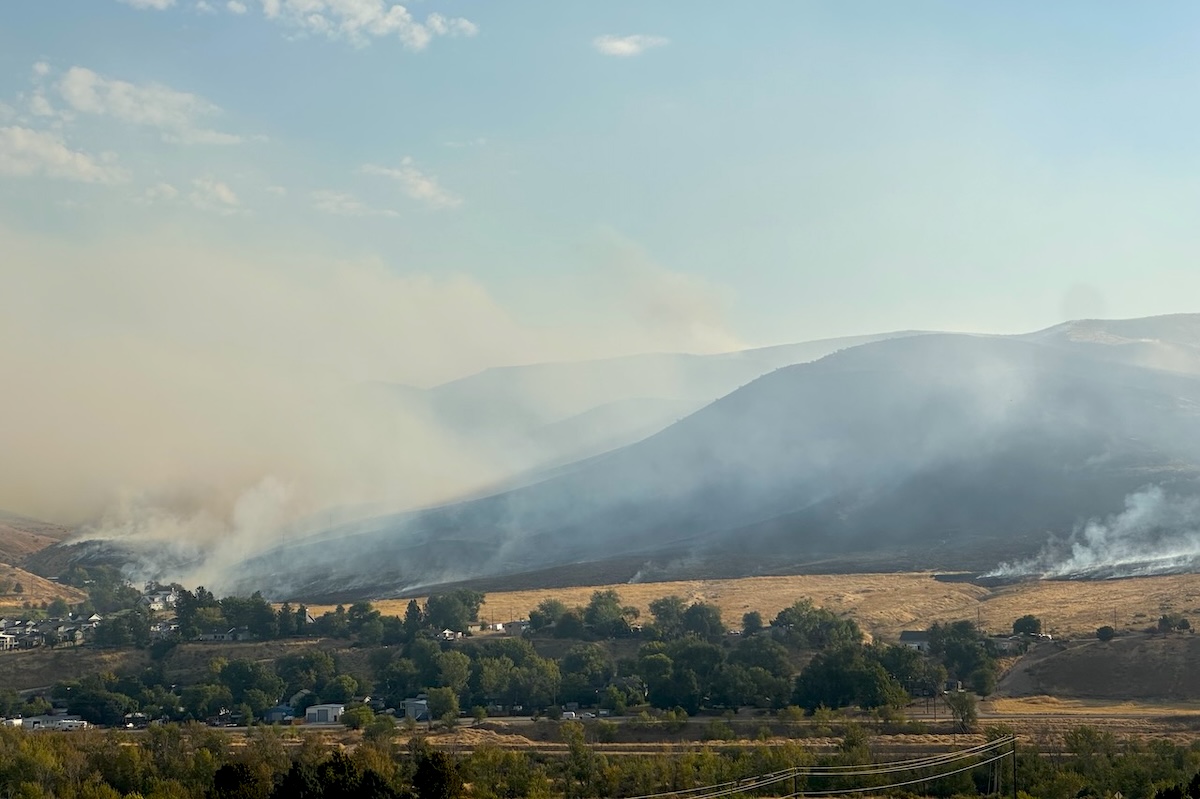
The Valley Fire burning in the Boise Foothills in early October. Join us November 16 in the Boise Foothills for a replanting project! See below for more info.
by Melanie Vining, Executive Director
Ok, so this could be the title of an article at the end of pretty much any summer lately. Snowpacks melting earlier, heat waves lasting longer and fall rains coming later are the new normal in the West, but with the west central Idaho Lava Fire almost out my backdoor and a recent trip to Salmon, which took me through the Wapiti Fire burned area, thoughts about a big fire season are on my mind. Thankfully, rain drips from the roof as I write this, but that brings its own challenges. More to come on that.
In the face of climate change and its effects- like longer fire seasons and more intense precipitation events- it’s hard not to feel helpless. With access to real time data through apps like Watch Duty, we can see maps of fire perimeters and almost watch them grow on our phone screens. Smoke fills the air, and we picture our favorite trail, lake, or campground blackened.
This overwhelmed feeling got me thinking: what can I- we- do? Not about climate change- that’s a longer blog and well outside my wheelhouse. No, I’m thinking about what we can do, and maybe as importantly, about how we can think about wildfire when it comes to recreating on public lands. Maybe some of you have already achieved enlightenment, but I struggle with this; maybe others out there do too.
- Adopt a perspective of optimism and a sense of Time. To me, this is important when it comes to a place I love being affected by something like fire, flood, or wind. I remind myself Nature is dynamic and that wild places are resilient, often on a LONG time scale. There’s a lot to say here about the importance of resilient landscapes, what is or isn’t “catastrophic fire”, human impacts on ecosystems, etc., but I’ll leave that to the experts and just say that, in my opinion, thinking about disturbance like fire as part of a dynamic system operating on a time scale beyond the span of a human life is weirdly comforting. Like, this black forest I see that was green last summer will be a little green the next summer, then greener, and is just part of a giant cycle and there isn’t any going back. Read up on ecological succession after disturbance if you haven’t (it is fascinating). Enjoy watching the first green shoots emerge from a burned shrub crown, or seeing aspen sprout from a black hillside, vibrant with the flush of fire-mobilized nutrients. Also for me, comfort doesn’t equal resignation. Dynamic system or not, there’s work to do.
- Be the change you want to see. Land managers like the Forest Service and BLM are tasked with wildfire suppression and post-fire management on Federal lands. Depending on where a fire is located, post-fire work may look like erosion-control measures to protect investments in roads, bridges, campgrounds and trails, replanting trees and shrubs for wildlife habitat for future timber harvest, or, sometimes, doing nothing but letting Nature do her thing. Us members of the public aren’t powerless to help, though. Want to ensure you can hike your favorite trails and watch, in real time, ecological succession at work as first forbs and shrubs, then trees repopulate the hillsides? Support your favorite trails organization or sign up for an ITA volunteer project! Burned areas are hot and dirty and you’ll sweat pulling that crosscut but keeping up with trail maintenance as trees fall and erosion happens is crucial to ensuring a trail isn’t lost post-fire. Love to fish, hunt, bird, or wander the hills and identify flower and shrub species? Support or volunteer with an organization dedicated to habitat improvement. A web search will yield non-profits that host volunteer days to replant native vegetation in areas affected by fire or other impacts. Join us for a replanting project on November 16 in the Boise Foothills! There are also projects like barbed wire fence removal (a major impediment to wildlife travel in some areas), noxious weed treatment, and collecting native seed for use in other areas. Resilient landscapes and wildlife populations are important before fire, like restoration is after. There’s nothing like a day of work in service to public lands to take the “less” out of “helpless”.
- Connect with your public land managers. Give a friendly call to your local Forest Service office and tell them how much you love a certain trail or campground. Ask if, post-fire, there are plans to work in that area. Agency employees have had a busy summer and are still dealing with the effects of large fires, trying to implement important work before winter hits, but a short phone or email message expressing your love of and support for a certain place doesn’t hurt. They may not have time to get back to you right away, but hearing from public land users is a good thing and just may help put certain areas front of mind when it comes time to prioritize work.
- Write your legislators. It may not be the short answer when it comes to getting that favorite hiking trail cleared after fire season, but it takes sustained funding to properly manage recreation on public lands. Let your Congressman or woman (or State Legislator) know you use Federal (or State) lands, how you use them, and what you want to see funded. It only takes a few minutes, and these letters add up. Sometimes, just “putting something out into the ether”- even into the ether of Congressional staffers- can yield results.
- Vote! Exercise your public right to vote for politicians who prioritize our public lands.
- Support local businesses. When a wildfire is burning and an area is closed for public safety, small businesses are hit hard. Summer is peak tourist season for many Idaho small towns and when fire and smoke discourage visitors hotels, restaurants, grocery stores and outfitters feel it. These businesses are often the first to donate goods and services to everything from the local school to the non-profit raising funds for things like trail work and river cleanups. Stop in at that little burger place on the highway through Smalltown, Idaho (Even if you aren’t hungry! Even if you must take an inconvenient trip off the highway bypass!); book a trip or a hotel stay; order unconventional holiday gifts from places across the state (who doesn’t want a gift card for a day on the river or a huckleberry milkshake?!).
- Be SAFE. I love hiking in burned areas in years following a fire. Each year is a snapshot of ecological processes at work. But these areas carry risk. Burned trees can fall for years after a fire as root systems rot out and points along the trunk weaken- even a light breeze can bring snags. Rain events can cause flash floods since there is less ground cover to slow down water and fewer live plants to take up moisture. Keep heads up, read about safety in a burned area, and heed any trail or road closures posted by land managers.
Watching something we love go up in a plume of smoke is hard. Knowing that, in our lifetime, certain places will never be the same hurts but it’s also a chance to reframe our thinking. We can rededicate ourselves to being part of Team Public Lands, to each finding a role that feeds our soul and makes things a little better.
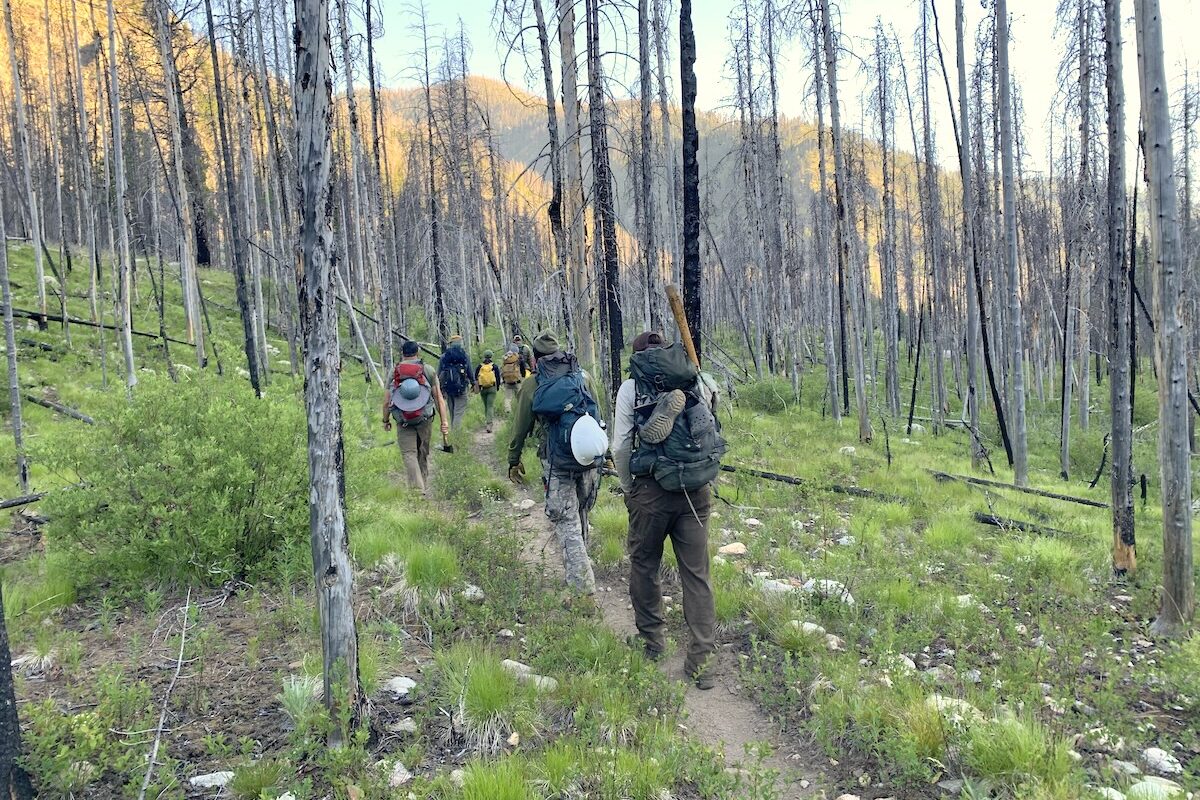
Photo by Michelle Florence from ITA's Middle Fork Project

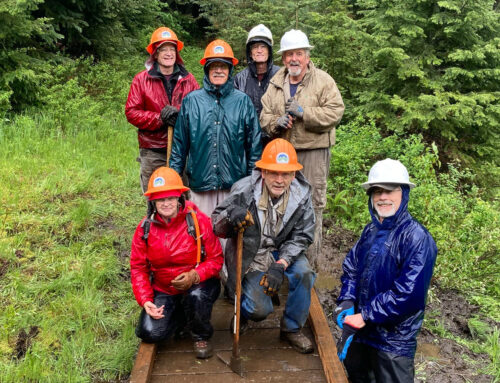

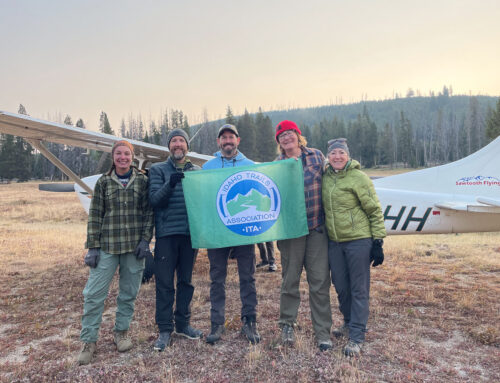
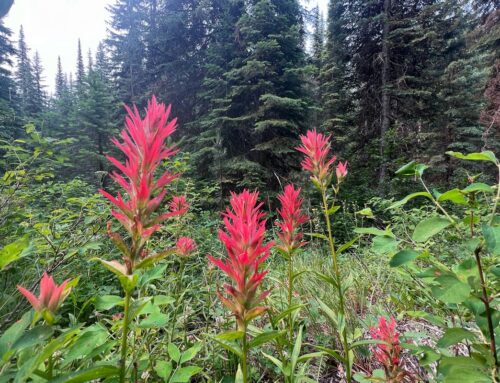
What a wonderful call to action, Mel! Thank you for your inspiration!